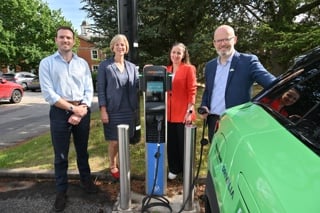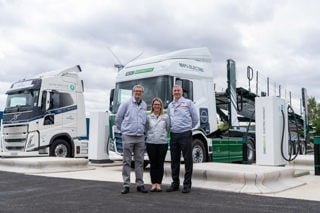Businesses need to start planning at least a year in advance of bringing electric vehicles onto their fleet, according to the boss of Mobilize Power Solutions (MPS), Renault’s electric vehicle charging and infrastructure offshoot.
Mark Dickens, formerly Renault fleet director, says the key considerations concern workplace charging and home charging infrastructure.
“All too often we see knee-jerk reactions to the adoption of charging, but it needs to be properly planned,” he says.
“We’ve seen horror stories, such as fleets who ordered electric vans and installed a charging infrastructure, but the chargers don’t work. The manufacturer gets the blame but in all the cases that we’ve got involved in, it’s the charger that isn’t right for the van – it’s the wrong kW or amperage because a van has different requirements to a car.”
On average, obtaining a quote from a distribution network operator (DNO) for a power supply upgrade can take six-to-nine months, and bidding wars can erupt when multiple companies want an upgrade.
The best-case scenario is four-to-five months but one case MPS is working on has a date of 2023 to complete the work.
Although owned by Renault, MPS takes a “brand agnostic” view on both manufacturer and charger type, according to Dickens.
“We have the expertise of the manufacturer that can be applied to fleets with our recommendation on what you should do from vehicle to infrastructure to the in-life use of cars, vans, trucks and buses,” he says.
“We see a lot of bad advice around if you have x number of vans, you need x chargers. This isn’t the case; it’s down to usage and how often vehicles stand still.”
He adds: “In-life management is also important and often overlooked. This includes maximising home charging for smart charging or managing the workplace versus home and the reimbursements. We can supply the car, but really our advice is from the car to the fleet management – charging, infrastructure, posts and power.”
Dickens predicts that the typical van operating cycle of 3-4 years will lengthen to 5-6 years due to lower maintenance costs, but cars could be the opposite. The desire for more flexibility could shorten replacement cycles.
“We are seeing an increase in interest with the new generation who want shorter, subs-based leases,” Dickens says. “These are more attractive to people with hybrid working structures and puts a question mark against the future of car ownership.
“We are also seeing some companies doubling the car allowance to open up their schemes to electric cars, especially for the junior management grades.”
However, he believes the Government needs to offer greater support and incentives to encourage uptake in the used market, such as a scrappage scheme.
“This is especially important for second and third ownerships who need to be confident that the electric vehicle and battery will have longevity,” he says.
Over a decade of experience with the electric Zoe, Renault claims a battery failure rate of less than 2%. The criterion for charging capacity is 85%; below that is a failure.
Battery life is best maintained by continuous use and recharge – keeping it within a range of 20-80% full is ideal. “The worst thing is to leave it charged in all the time,” Dickens adds.






















Login to comment
Comments
No comments have been made yet.